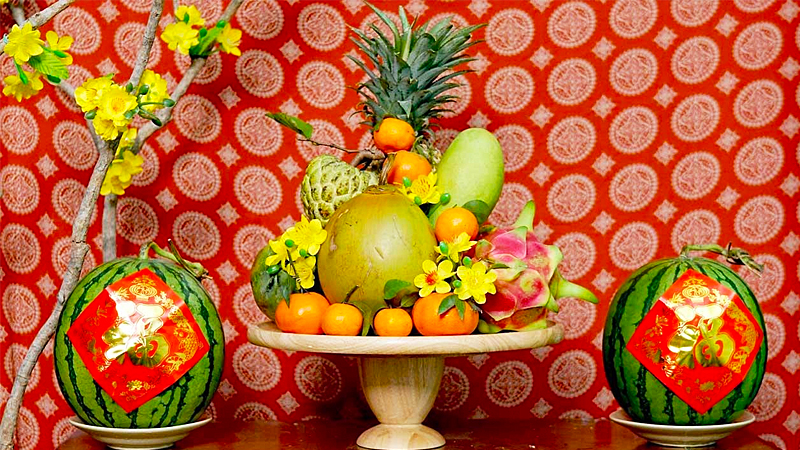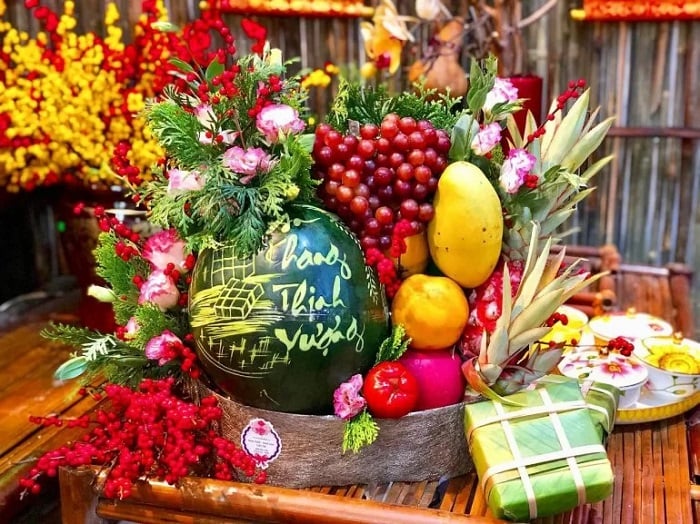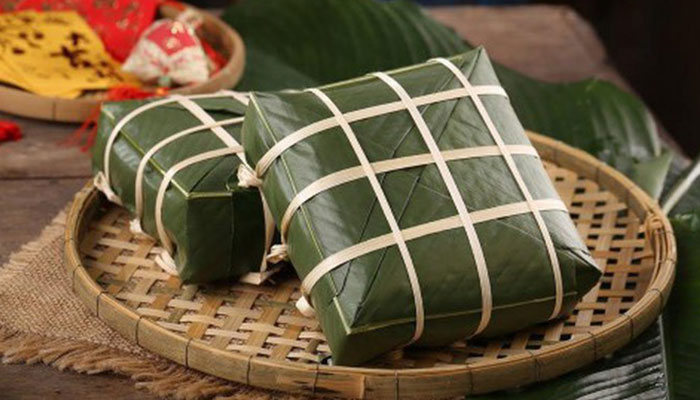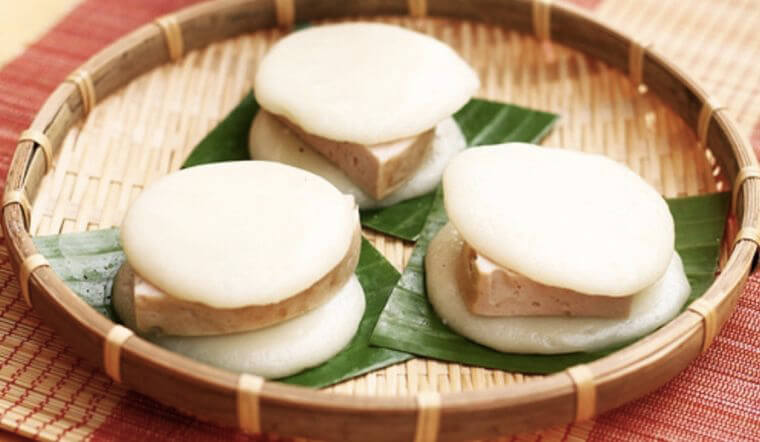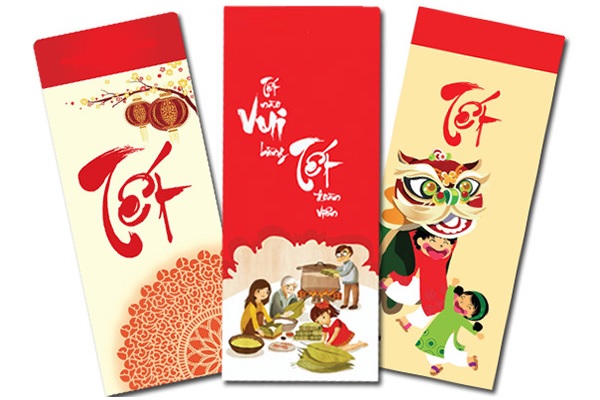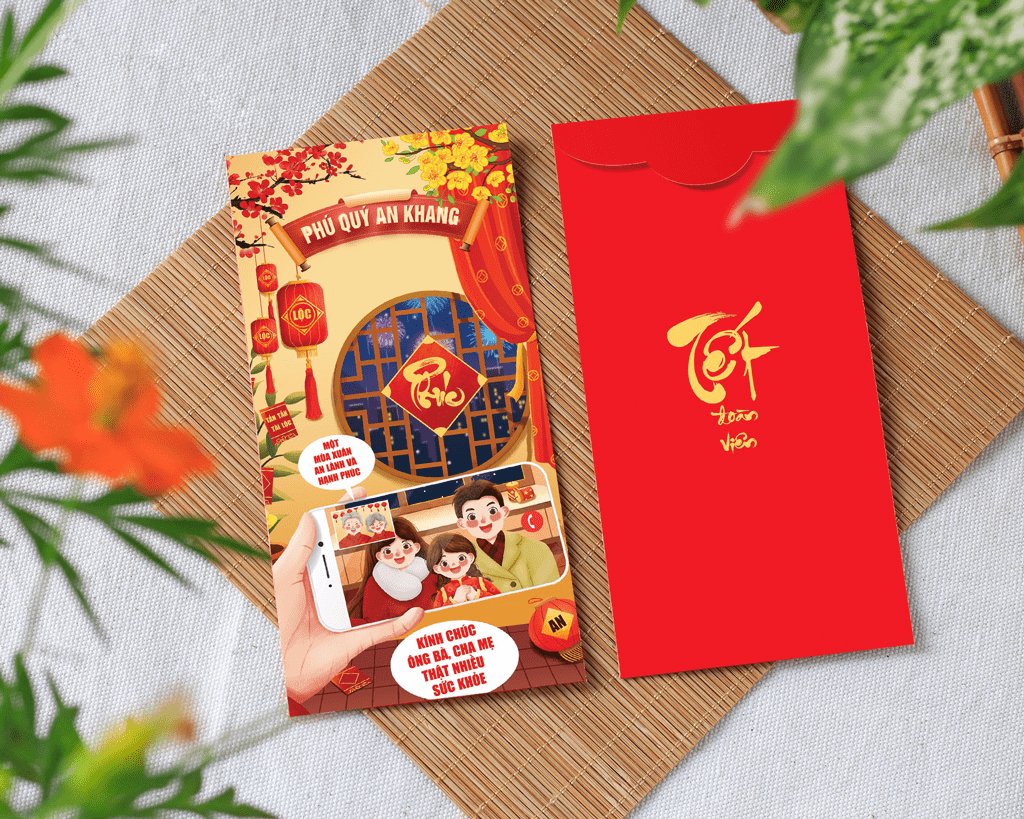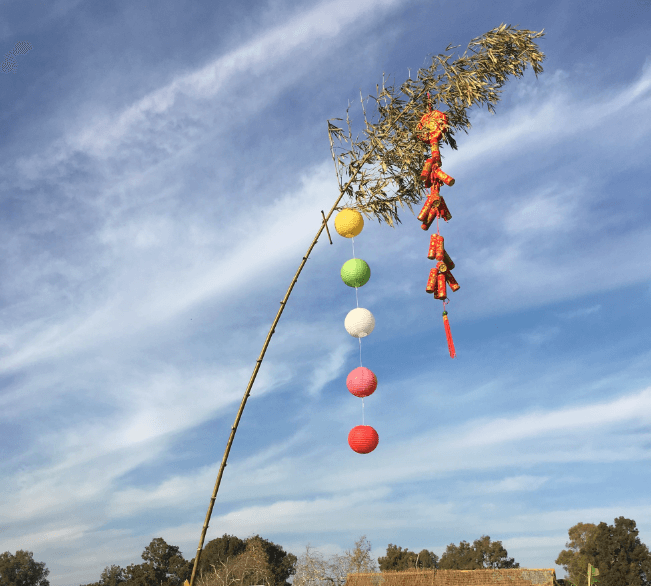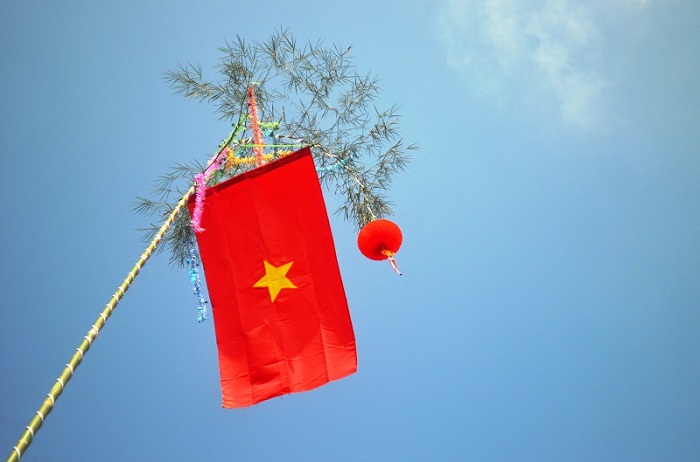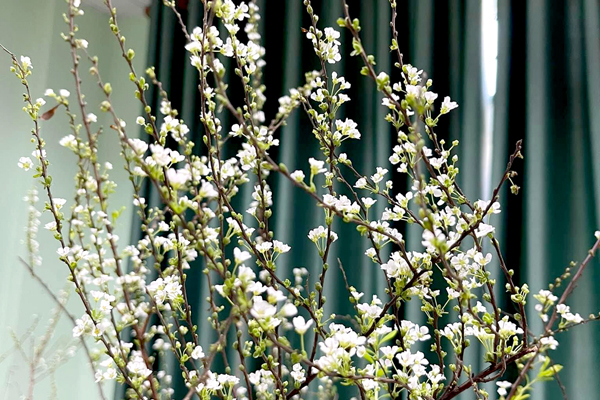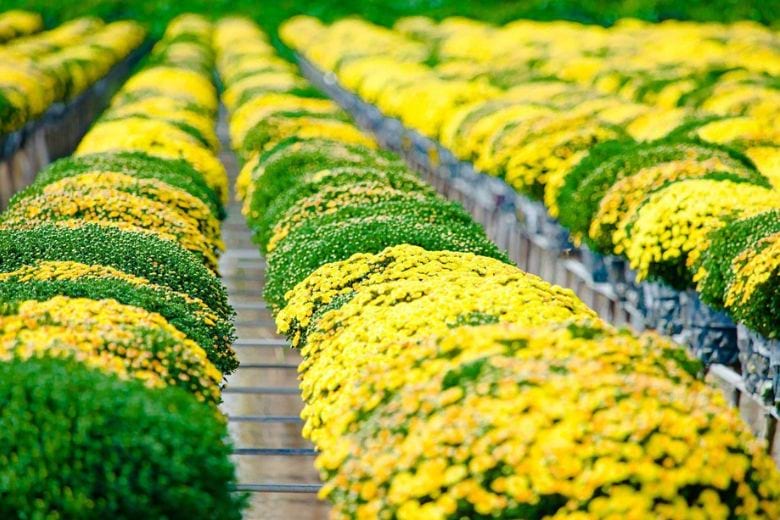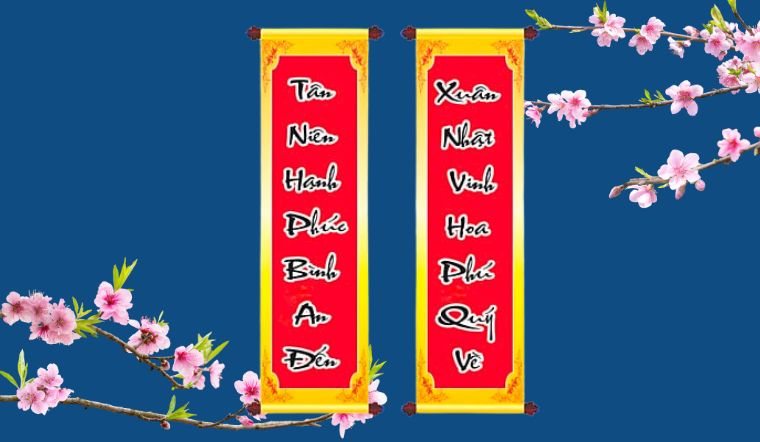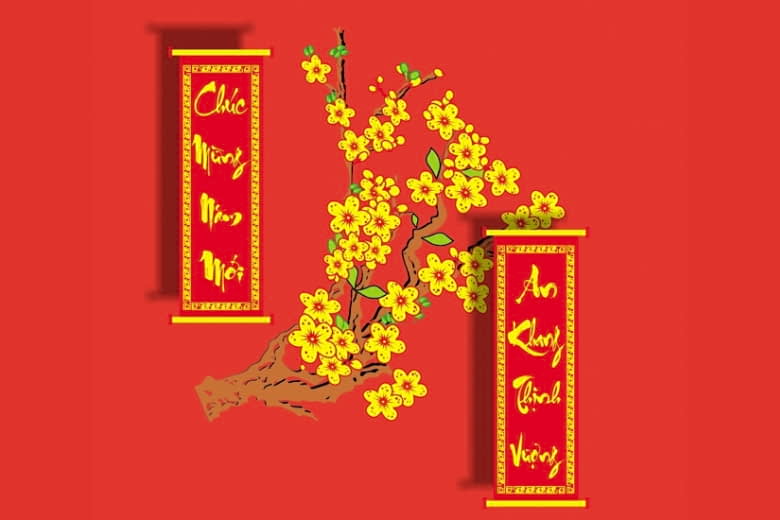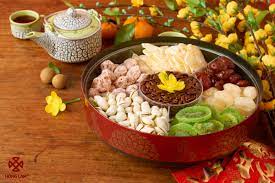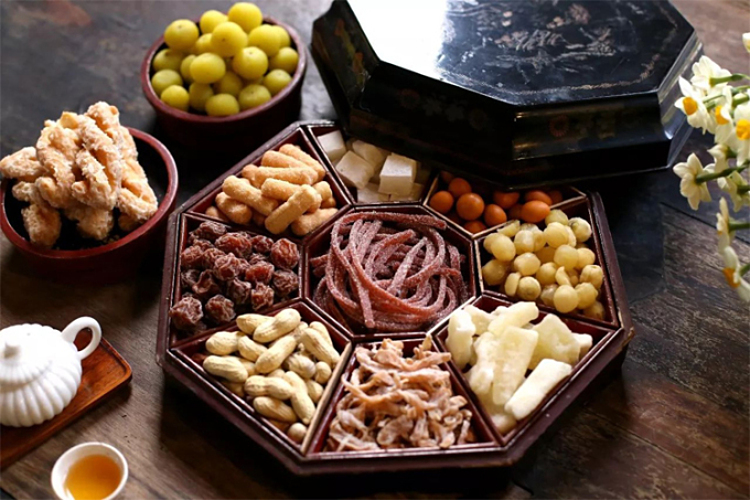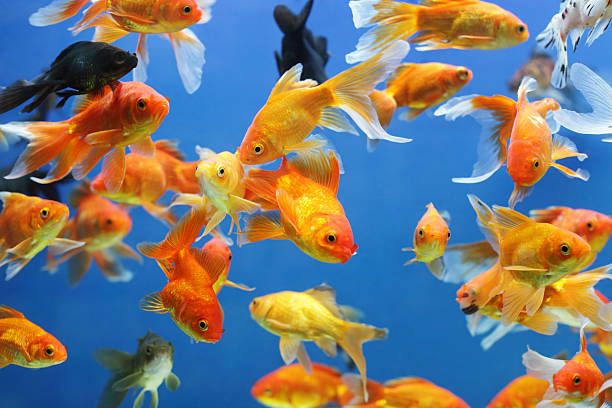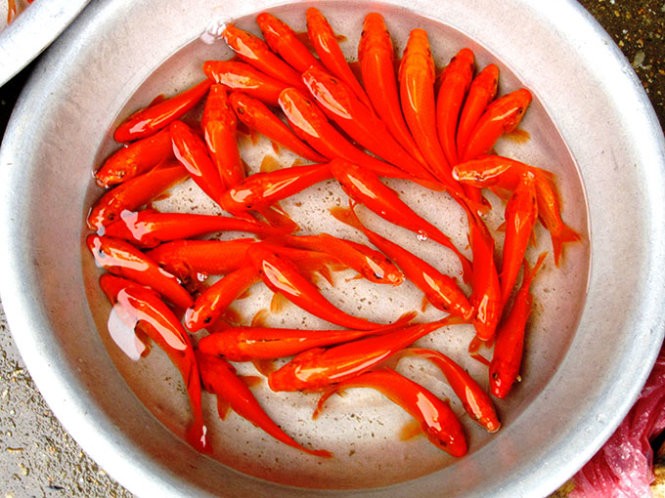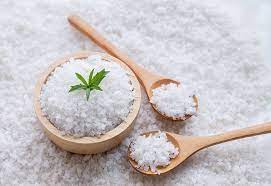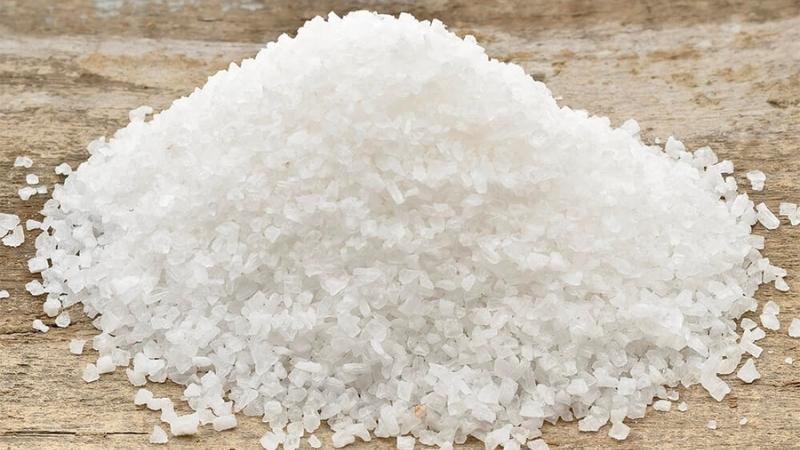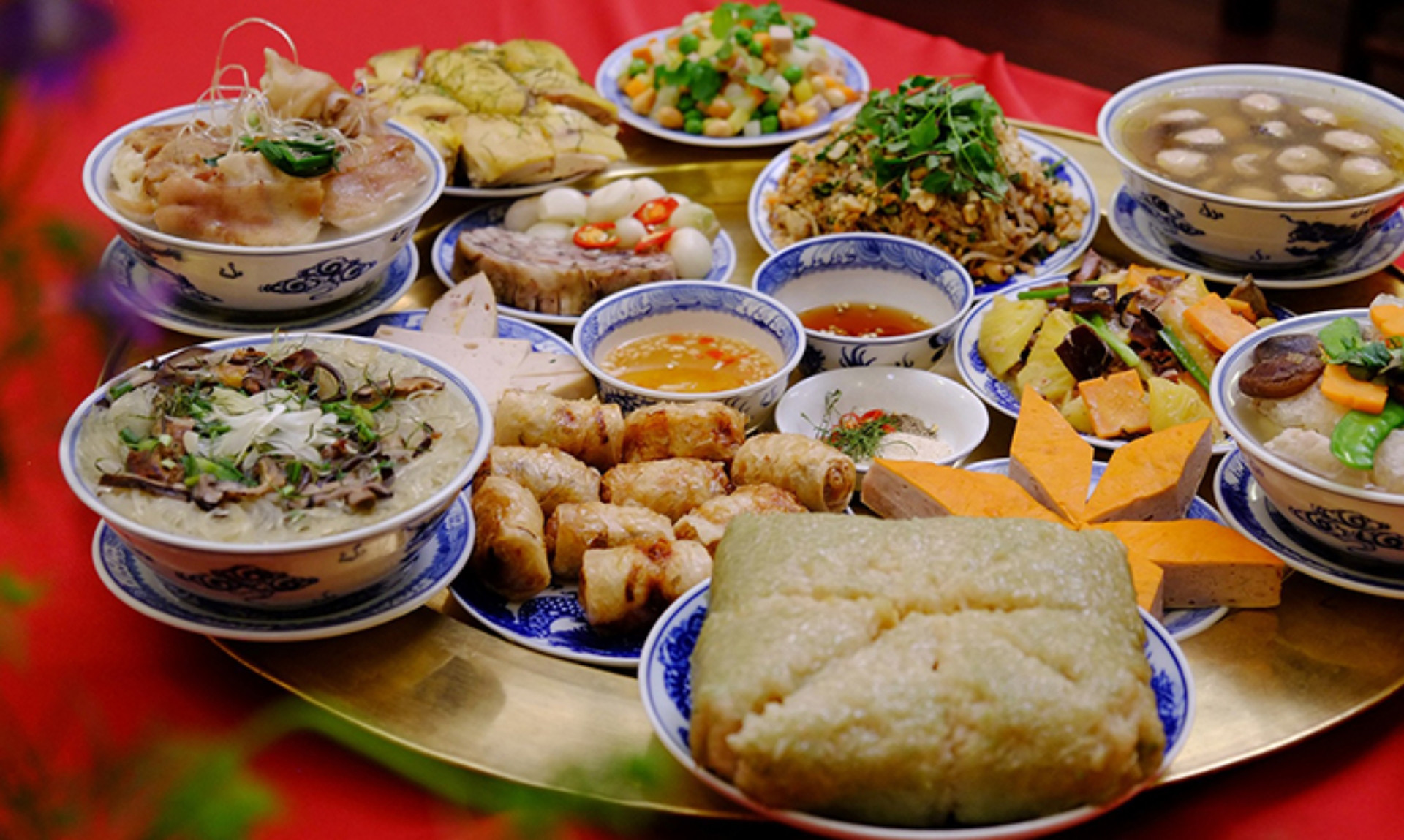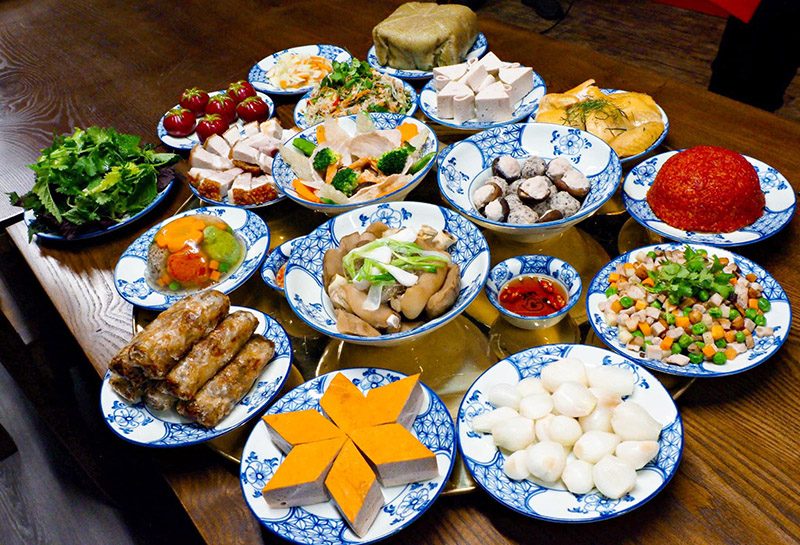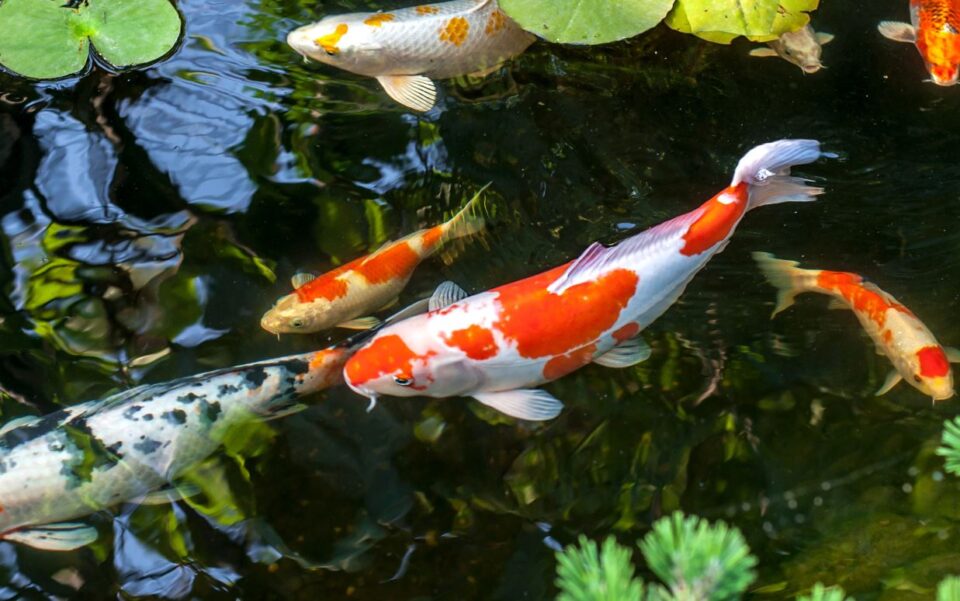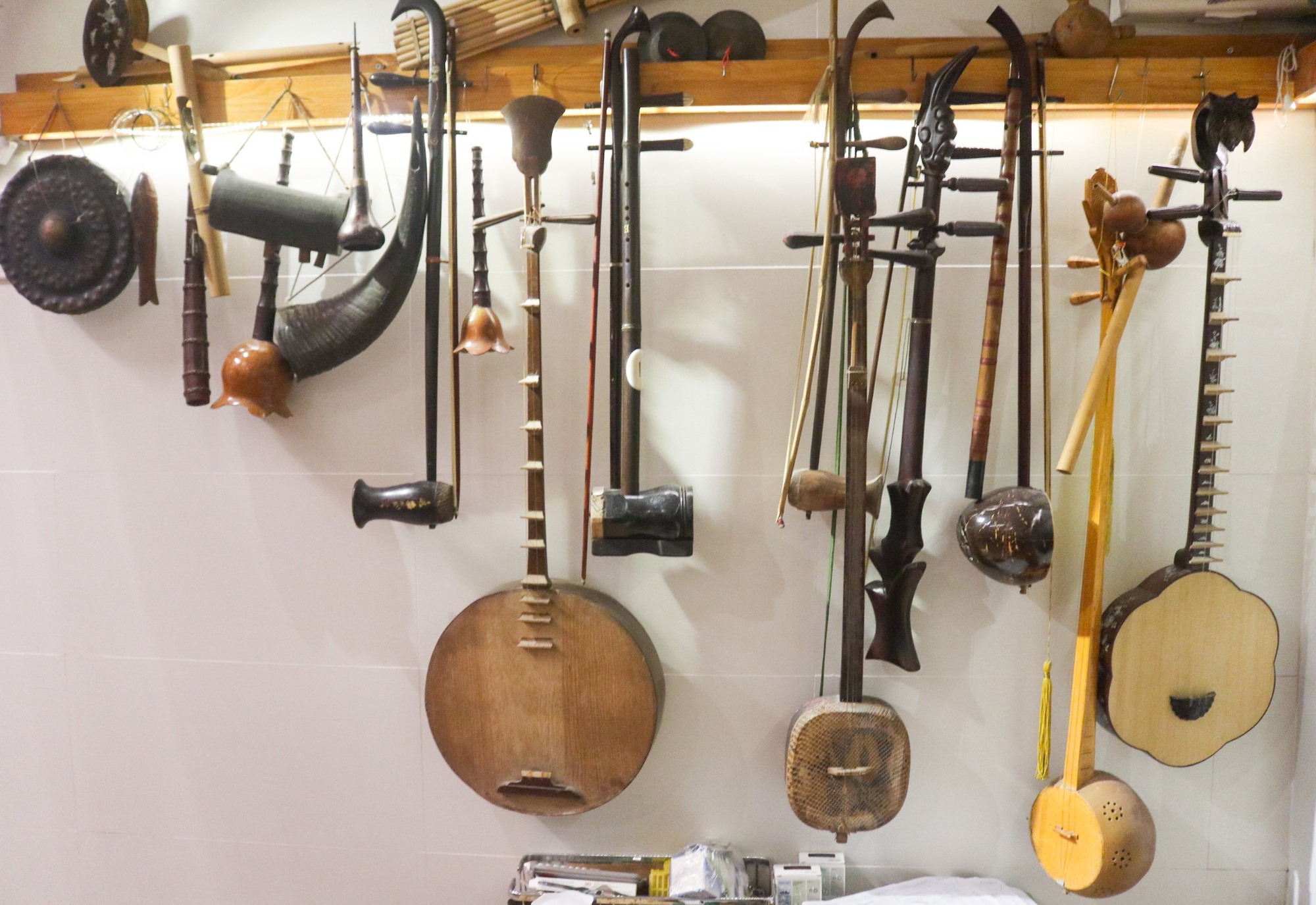Top 10 traditional Tet symbols that create Vietnamese culture
Lunar New Year is the biggest traditional holiday in Vietnamese culture, and is also the time when we most clearly feel the pure beauty of folk culture. Five-fruit tray, banh chung, bamboo tree… and many other images have become indispensable images every Tet and spring. Read Travel vivu’s article below to understand more about the meaning of these symbols in folk culture!
Mâm ngũ quả
The five-fruit tray is a tureen or large plate containing many different types of fruits and flowers arranged meticulously and beautifully on each family’s ancestral altar during Tet. The reason it is called “five fruits” is because the tray usually has at least 5 different types of fruits and flowers, symbolizing the five elements – the 5 elements that form heaven and earth. The way to choose fruit and arrange trays is not constrained by any strict rules. Depending on the cultural characteristics of each region, people will have different ways of choosing fruits, and of course they will have their own meaning, symbolizing the homeowner’s wishes for the new year. It can be seen that the five-fruit tray on Tet is a typical cultural feature of Vietnamese people and although there are differences between regions, they all show respect towards their roots, ancestors and wishes for a new year. new peace and happiness.
Southern people set out a tray of five fruits with the hope of “praying for just enough food” to enter the new year full and prosperous. Therefore, the five-fruit tray on Tet in the South usually corresponds to 5 types of fruits: Soursop, fig, coconut, papaya and mango. In addition, there are also pineapples with the hope of having children and grandchildren filling the house or a pair of green watermelons with red skin to pray for good luck. While the five-fruit tray on Tet holiday of the Northerners may worship bananas, pears…, the Southerners are very afraid of some fruits whose pronunciation has negative meanings such as bananas which are close to the word “muoi” or “do”. can’t make a living, oranges and tangerines have the meaning of oranges making tangerines endure, pears are close to pears, falling apart, failing.
Bánh chưng, bánh giầy
Every time Tet comes, no matter where Vietnamese people go, there is never a shortage of banh chung and banh giay in the traditional Tet feast. Every house has several pairs of banh chung to worship their ancestors. It can be said that banh chung and banh giay in the minds of Vietnamese people is the tradition of “when drinking water, remember the source”. It is a typical national dish in the first days of the new year. According to ancient beliefs, Banh Chung and Banh Giay are symbols of heaven and earth, and are typical culinary features of Vietnamese culture during every Tet and spring season. Banh Chung and Banh Giay have become a cultural feature, a traditional and long-standing dish in Vietnam. This unique feature has contributed to beautifying Vietnam’s image in the eyes of international friends. Even though everyone is far from home, they look forward to coming home to a pot of cakes every New Year’s Eve.
Along with ancient legends, Banh Chung and Banh Giay encapsulated an entire wet rice agricultural civilization at that time. The outside of banh chung is wrapped in naturally available dong leaves, the inside is made from sticky rice, green beans, onions, pork… all are traditional cooking ingredients of the nation. That’s why banh chung appears on Tet to express gratitude to heaven and earth for providing favorable weather and good harvests, bringing a prosperous life to people. Tet banh chung also shows a child’s filial piety to his parents, which is why the custom of using banh chung as a gift to his parents also came from here. That’s why banh chung appears on Tet to express gratitude to heaven and earth for providing favorable weather and good harvests, bringing a prosperous life to people.
Phong bao lì xì
Lucky money at the beginning of the year has existed for a long time, the origin of this custom is also woven into many stories. There is a story that in the past, in Dong Hai, there were many demons that often caused harm to people, but on weekdays they were always guarded by fairies in the lower world. However, every year the fairies must return to heaven at New Year’s Eve. At this time, demons roam around and harass sleeping children, causing them to startle and cry and get fevers, so parents often do not dare to sleep to keep watch over their children. One time, eight fairies passing by the house saw that and immediately turned into coins lying next to the children. Their parents wrapped these coins in a red cloth to ward off demons. This miracle quickly spread throughout the world, so when Tet comes, people put money in red bags to give to children, so that the children can grow up faster and be healthier. From then on, it became the custom of giving lucky money. years like today.
Lucky envelopes have many profound and good meanings. The envelope symbolizes confidentiality, not comparing superiority or inferiority, to avoid leading to unnecessary conflicts. The red color of the lucky money envelope symbolizes wishes, auspiciousness, and prosperity throughout the year. In addition, it is also considered the color of hope and luck. People who receive lucky money always believe that these envelopes will bring happiness and fortune throughout the year. Every morning on the 1st, after waking up early and dressing up in beautiful clothes, adults and children take turns coming out to wish New Year, wish longevity, and give lucky money to grandparents and parents. After that, adults will give the children lucky money envelopes along with wishes for happiness and all the best things to come to their loved ones throughout the year.
Cây nêu
For many generations, the image of the tree has been a sacred and familiar symbol of the Vietnamese people during the traditional Tet holiday. The tree is usually built from tall, long bamboo stalks. Depending on the culture of each region, people will hang decorative objects with different meanings, such as bells, exorcism talismans, paper carp, or wine bottles, lanterns… People believe that light Bright lanterns will guide the Ancestors home to enjoy Tet with their children and grandchildren, while bells and talismans will make ghosts afraid, not daring to disturb the homeowner. Particularly for ethnic minorities, this type of tree appears in individually owned fields that have not been reclaimed. The owner of the field found four tall trees, cut them horizontally, set them up at the four corners of the field like four pillars and called them Neye trees.
The tree mentioned here is a bamboo tree about 5 – 6 meters long, erected in front of the house on the 23rd day of the twelfth lunar month, the day the Kitchen God worships the Heavens. The bamboo tree must be made of bamboo because bamboo has fire, it is the staircase of the gods, bringing the life energy of heaven to the ground to help the ground become fertile, gathering vitality to help the crops grow. Bamboo must be old, big, straight, and must not have ends cut off. The tree trunk can be decorated with flags, banners, lanterns, parallel sentences, clay pots filled with lime, and wind chimes. Below the base, sprinkle white lime powder to form a circle or sprinkle in a bow shape with an arrow pointing towards the gate to ward off evil spirits. Recently, the custom of planting trees on Tet holiday has gradually become less popular in the modern Vietnamese community, and has been replaced with the custom of playing peach blossom and apricot blossom branches on Tet holiday.
Tet flowers
Spring is the season when plants and trees sprout, so it is not strange that when Tet comes, during such happy days, everyone wants to decorate their house with all kinds of plants and flowers. Tet flowers are countless with all kinds of varieties such as gladiolus, marigold, chrysanthemum, persimmon… but typical plants and flowers are limited to only two things: Northern pink peach and Southern yellow apricot. For Northerners, when mentioning Tet, people will immediately think of peach blossoms – flowers that only bloom in the Spring, to serve the Lunar New Year. In spirituality, in the past, to keep demons from disturbing life, people came up with a way to break off peach branches and put them in a vase. Accordingly, as soon as they see a peach branch, the demons will run away and not come near that house anymore. In addition, peach blossoms are also a symbol of innovation, proliferation, and strong development. They can bring a new source of vitality, helping everyone in the house stay healthy, peaceful, and everything goes as expected. new year.
The North has peach blossoms and the South has apricot blossoms. The yellow color of apricot flowers has long been considered a color that symbolizes wealth and prosperity. People display apricot blossoms during Tet with the hope of a prosperous and prosperous new year. According to many people’s beliefs, the more petals apricot blossoms have in a house, the luckier and more prosperous that house will be in the new year. Apricot trees have roots that go deep into the ground and do not collapse before storms. It can also withstand all types of weather, including extreme weather. Therefore, apricot also symbolizes the noble qualities of patience, sacrifice, and perseverance of Vietnamese people in general. Besides, apricot is also a symbol of nobility and nobility.
New Year couplets
Hanging Tet couplets in the house has long become a beauty in Vietnamese culture. When Tet comes, it’s time for people to prepare and decorate their homes with red couplets. Symbolizes luck, auspiciousness and success in the new year. Not only that, playing Tet couplets is also an elegant hobby for many people. Demonstrates the intelligence and art of wordplay of the person using couplets. This is considered the quintessence of origin, a spiritual dish for Tet. During Tet, ancient Vietnamese people often had the habit of buying and asking for red parallel sentences to hang in their homes. These are rhymed and opposite verses written on peach or red paper. According to ancient Vietnamese beliefs, red is a brilliant color, and each word written on paper is the most meaningful wishes and prayers. Create profound educational lessons, guiding people to the beauty of truth, goodness, and beauty.
Our grandparents still have the saying “Green banh chung, fatty meat, pickled onions, red couplets”. The custom of hanging pictures and puzzles for Tet originates from the elegant pleasures of feudal Confucian scholars. Partly to decorate the house, also partly to show off one’s “talent”. Gradually this hobby became popular and became a common custom of Vietnamese people during Tet. Tet paintings are quite diverse, usually folk paintings such as five-fruit tray, or Dong Ho paintings, or can also be word paintings such as Tam, Phuc, Duc… People also have the habit of writing or asking for words from the masters to Get lucky in the new year. Along with hanging paintings and parallel sentences, the image of the Master “Displaying Chinese ink and red paper…” has also become familiar in our country’s culture.
Mứt Tết
Lunar New Year is the biggest traditional holiday of Vietnamese people, and is also the time when we most clearly feel the pure cultural beauty of the nation. Jam has become indispensable during every Tet and spring season with unique symbolic meanings. Tet jam is an indispensable gift on every family’s coffee table during Tet. Nowadays, on the market there are many more diverse types of Tet cake gifts, traditional jams are still popular in every family, something to sip with a cup of hot tea, along with stories at the beginning of the year.
Not only is it a delicious and attractive snack for both adults and children, sipping sweet jam with a warm cup of tea has long been a Tet holiday pleasure. Jam is usually made from fruits and some tubers with sugar. Traditional Tet jams include lotus seed jam, coconut jam, ginger jam, pumpkin jam, kumquat jam… Each type has its own unique color, flavor and meaning, for example, lotus seed jam represents wishes. Wishing for a reunion in the new year, filled the house with children and grandchildren; Kumquat jam means good luck, peace and prosperity in the new year…
Carp
In Vietnamese mythology, the image of the carp has been passed down through generations and is considered the most noble creature among the creatures that are sacred and worshiped by our people. Because these are sacred creatures, they can call rain and wind to serve the crops for our people to do business. Therefore, they are increasingly favored by our people, giving them much love and worship as an indispensable part of our mental and spiritual life.
Carp is a traditional symbol imbued with folk culture. According to ancestors, the preparation for Tet begins on December 23, the day of worshiping Ong Cong and Ong Tao – those who take care of the kitchen and record all the good and bad deeds of the homeowner throughout the year. over to report to the Jade Emperor. Carp is the means of transportation of the 3 Vegetable Heads. Therefore, on the 23rd, when offering offerings, in addition to fruits and gold coins, there will be 3 carp.
Salt
On the first day of the new year, even right after New Year’s Eve ends, many people have the habit of buying salt to bring home for good luck for the whole year, wishing for a prosperous life. On the last day of the year, people buy lime to re-sweep their houses and gates in the hope of avoiding bad luck or building doors. Therefore, on the morning of the first day of Tet or right after New Year’s Eve, in some Northern Delta regions, there are many people selling salt walking around the village roads and alleys. At temples and pagodas, salt is sold along with fruits, incense sticks, votive papers…
In daily life, salt holds an important position, second only to rice. According to feng shui, salt has the effect of preventing impurities, repelling evil spirits and demons and bringing good luck to every family. The salty taste of salt is like a passionate, salty feeling, bringing richness to family relationships, friends, neighbors, harmony between husband and wife, children, and convenience in relationships. business system. People often buy salt on the morning of the first day of Tet. However, there are also places to buy salt right after New Year’s Eve ends.
Tet feast tray
Tet feasts are one of the traditional beauties of the first days of the Vietnamese year. In every home during the Lunar New Year, there must be a feast to honor ancestors and grandparents and express wishes for a prosperous and prosperous new year. Each region will have a feast on the first day of spring with many distinct dishes. When Tet comes, in addition to cleaning the house to welcome the new year, preparing the Tet feast is a very important and necessary job. In the South, the Lunar New Year feast often includes many delicious and quite simple dishes. Normally, the Southern people’s feast on Tet will include banh tet, tubers mixed with dried shrimp, bitter melon stuffed with meat, braised pork… Each dish has its own color and flavor, contributing to making Tet feasts in the South become more diverse and richer.
The Central region is a land that suffers from many natural disasters, storms and floods every year. Not as liberal and rustic as people in the South, people here are very meticulous and quite picky in how to prepare delicious dishes in the Lunar New Year feast. The Lunar New Year feast in the Central region has many delicious dishes. In particular, the dish represents family affection. With the hope that in the new year, family members will always be in harmony with each other, and relationships between members will be closer. Among the feasts in our country, perhaps the feast in the North has the oldest tradition. In previous years, most Lunar New Year feasts in the North followed the rule of 4 plates – 4 bowls or maybe 6 plates – 6 bowls… with meanings of four fortunes all year round. Not only that, but the concept of presentation of dishes is also presented in the style of plates on plates below or on different levels.
